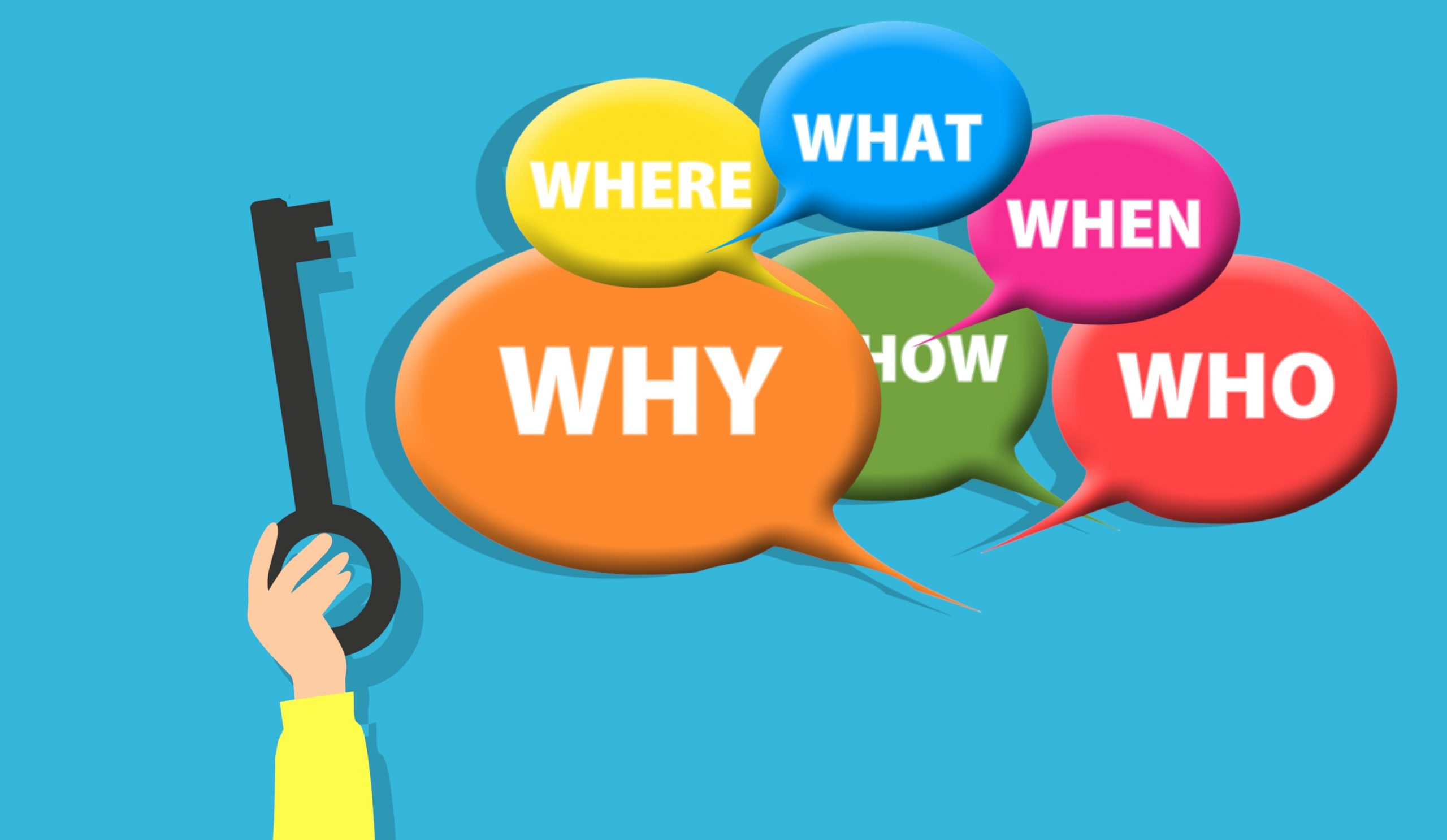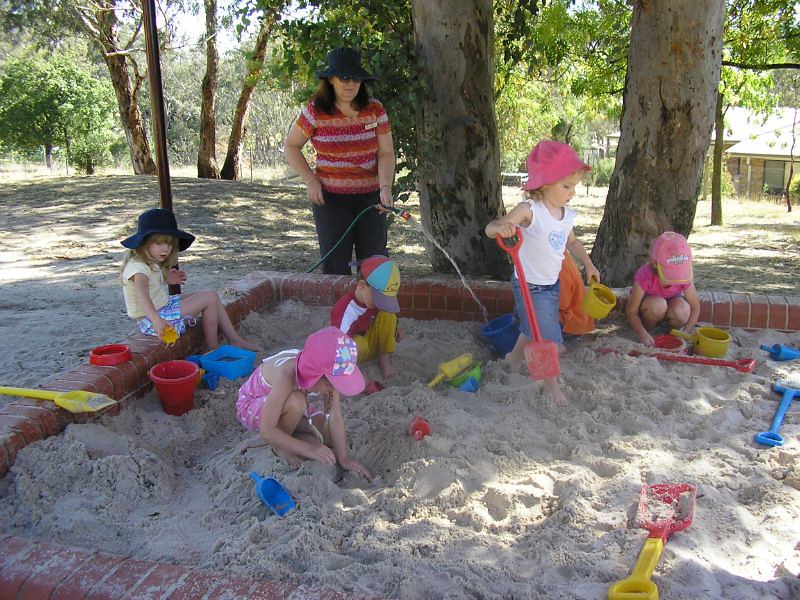So, You Want to Teach Early Childhood Education
|
Topical Outline |
Colorado Standard Competencies |
|
Professionalism
|
Demonstrate an understanding of professionalism in Early Childhood education including:
|
Vocabulary Standard Competency: Explain basic early childhood and early childhood special education terminology |
| Advocacy: Action that argues for an issue or course of action; support or defense of a group
Early Childhood Education: The title of the profession chosen by the Power to the Profession Task Force Early Childhood Educator: The title of the professionals chosen by the Power to the Profession Task force; those who provide direct service to children, birth to age 8 Ethical Conduct: Behavior following moral and right principles Ethical Dilemma: Moral conflict that requires choosing between two conflicting values and responsibilities Ethical Finesse: Finding a way to resolve a problem that is acceptable to everyone involved Ethical Ideals: Aspirational statements guiding behavior Ethical Principles: Rules for practice dividing ethical from unethical behavior Ethical Responsibility: A clear-cut rule regarding moral decisions Field of Practice: Specialization or a defined scope of work undertaken by an identified group of practitioners NAEYC: National Association for the Education of Young Children. Prominent professional organization for early childhood educators Professional: The inhabitant of a role in an occupation—the person who does the work of the profession |
Introduction
|
|
Reflection Why do you want to work with young children?
|
You have asked yourself this question many times as you started your early childhood journey. We will use the diagram as our guide to take a deeper, meaningful dive into the early childhood profession.

Why?
Simon Sinek encourages us to start with “why.” His Ted Talk (Start with Why) highlights the importance of beginning with this understanding, to help everything else fall into place. So let us start there. The way that you answer will have much to do with how you move forward. It will help you define your core beliefs about working with young children, the type of program you will feel comfortable in, how you will approach your career, and the tasks you will prefer doing. Revisit your “why” often and use it wisely to guide you.
While you will have an individual “why,” the field of early childhood education also has a collective “why” that guides our work. Every profession has an organizing body that unifies its members’ voices. The National Association for the Education of Young Children (NAEYC), established in 1926 and always evolving, is the premier professional organization for those working with young children and families. We encourage you to visit their website naeyc.org to view the many resources available to you, including articles, books, research, conferences, and position statements. Because there are so many individual “whys,” rather than telling professionals specifically what to do in every situation, NAEYC has compiled two principles that broadly define our unified early childhood “why.”
Principle 1: The first is a Code of Ethical Conduct, which lays the foundation for “why” we behave as we do. It is provided in the NAEYC Statement of Commitment:
As an individual who works with young children, I commit myself to further the values of early childhood education as they are reflected in the ideals and principles of the NAEYC Code of Ethical Conduct. To the best of my ability, I will:
- Never harm children.
- Ensure that programs for young children are based on current knowledge and research of child development and early childhood education.
- Respect and support families in their task of nurturing children.
- Respect colleagues in early childhood care and education and support them in maintaining the NAEYC Code of Ethical Conduct.
- Serve as an advocate for children, their families, and their teachers in community and society.
- Stay informed of and maintain high standards of professional conduct.
- Engage in an ongoing process of self-reflection, realizing that personal characteristics, biases, and beliefs have an impact on children and families.
- Be open to new ideas and be willing to learn from the suggestions of others.
- Continue to learn, grow, and contribute as a professional.
- Honor the ideals and principles of the NAEYC Code of Ethical Conduct
Principle 2: The second set of guiding principles compiled through years of research on how young children develop and learn, lays a foundation for the general practices we use when planning, implementing, and reflecting on interactions and experiences in the programs. Again, rather than a step-by-step guide on exactly what to do in every situation, these “Developmentally Appropriate Practices” highlight the “whys” that guide what we do with young children. The content presented in this textbook is based on these principles, which include practices that:
- Are appropriate to children’s age and developmental stages, attuned to them as unique individuals, and responsive to the social and cultural contexts in which they live.
- Include comprehensive, effective curriculum incorporating knowledge that all domains of development interrelate.
- Embed what is known about the interrelationships and sequences of ideas, so that children’s later abilities and understandings can be built on those already acquired.
- Know that both child-guided and teacher-guided experiences are vital to children’s development and learning.
- Understand that rather than diminishing children’s learning by reducing the time devoted to academic activities, play promotes key abilities that enable children to learn successfully.
- Hold critical that a teacher’s moment-by-moment actions and interactions with children are the most powerful determinant of learning outcomes and development. Curriculum is important, but what the teacher does is paramount.
- Ensure that for teachers are able to provide care and education of high quality, they must be well prepared, participate in ongoing professional development, and receive sufficient support and compensation.
- Realize that children are part of families and communities and that partnerships between home and school are crucial
|
|
Reflection How does your professional WHY fit into this collective WHY?
|
WHO?
Who are the Children?
The children you will work with are as diverse as the people that collaborate with them. Many programs are divided by age groups, so that is one way to define “who”:
- Infants – from birth to about 12 months (1 year) of age
- Toddlers – from about 12 months (1 year) to 30 months (2 ½ years) of age
- Preschool – from about 2 ½ to about 5 years of age
- Pre – Kindergarten or T-Kindergarten – usually 4-5 year of age
- Kindergarten – 5 years of age
- Early Elementary (Grades 1-3) – 6-8 years of age
The children you work with can be defined in many other ways, some of which you will visit in this class, as well as other early childhood courses. Each child is unique and will come to you with their own experiences, strengths, and temperaments. Some you will connect with right away, and others you will need to stretch yourself to understand. The one thing that EVERY child you work with will have in common is the need to be respected, valued, and loved. They need a safe place to trust and make connections, to feel comfortable and included. One of your primary jobs as a teacher is to connect with each child and value them as individuals.
Who are the Families?
Often, when we choose to work with children, we do not realize that by extension that means working with families. The younger the children, the more they are connected to the people in their home, and best practices for young children include partnerships between their two most important worlds, home, and school.
In a later chapter we visit many aspects of working with families, so here we will simply say, just as your family is important to you and taught you many things, so too it will be for the children and families you work with. We need to conceptualize that families are a child’s first teacher and will be a strong and valuable teaching partner while their child is with us. They are entrusting us with their most prized possession and expecting that we will cherish that child as they do. A privilege indeed!
Who are the Teachers?
As can be imagined, the people that are called to teaching are diverse indeed. Each brings their own set of strengths, interests, beliefs, and experiences. There is no “one right way” to teach; no magical guide you can refer to that will tell you exactly what to do in every situation. Every teacher will approach circumstances differently and this is both the joy and the trial of teaching. Your “why” will determine much of what you do. This will blend with your knowledge, experiences, and dispositional traits to guide you on your teaching journey.
With that said, there are some skills and traits that are helpful for high quality teachers to possess. Some of them are knowledge based and you will learn them as you complete your courses and field experiences. Repeatedly we hear new teachers reflect on the importance of realizing that the early childhood classes they are taking are “job training” courses that should be valued with time spent understanding and internalizing the content rather than simply trying to pass with minimal effort to complete them.
This will be particularly true with experiences in the field. At some point in your course of study, you will be expected to visit programs to observe and participate. While this can be difficult to fit into your schedule, as well as frightening to undertake, these experiences are crucial to developing your skills as a teacher. You can read and study all of the content you can, but until you actually put it into practice with real children, it cannot come to life for you. We encourage you to try as many different experiences with children as you can. Certainly, some class assignments will lend themselves to this endeavor, as will volunteer opportunities in the community. Ask your instructors or others in the field about these types of experiences. You never know what adventures await until you ask.
While your education, knowledge, and experiences will prove vital to your success as a teacher, there is another realm of traits to be considered.
High Quality Teachers
Here is a list of dispositions and traits frequently noted as occurring in high quality teachers:
- Reflective
- Compassionate
- Authentic
- Supportive
- Respectful
- Encouraging
- Safe
- Trustworthy
- Positive
- Shares control
- Focuses on strengths High, realistic expectations
- Kind
- Patient
- Dedicated
- Knows learners
- Engages learners
- Ethical
- Growth Mindset Approachable
- Present
|
|
Reflection Look at the list above. What dispositional traits do you currently possess? Are there some you may not yet have, but can develop? How would you plan to develop them?
|
You listed some of their education or experiences, but more than likely you included some “dispositional” traits as well. Lillian Katz was one of the first to define some of the dispositions that high-quality teachers seem to possess. While some of these can be studied and developed, most occur naturally in the noted quality teachers.
Teachers go through stages and in the initial stage of survival, it is difficult to discern if it is the age group, the program, or just your limited experience that is feeling overwhelming and uncomfortable. Below is a table of the stages you can expect to go through over the years on your teaching journey:
|
Stage |
Common Feelings |
Common Needs |
Advice from the Field |
|---|---|---|---|
|
Survival |
Fear, inadequacy, doubt, overwhelmed, exhaustion |
Support, practical information and advice, understanding, a mentor or coach, resources |
|
|
Clarity |
Clearer understanding, noticing individual children and needs, a little less fear, moments of adequacy |
Continued support, continued resources, a mentor or coach, encouragement to try new things, |
|
|
Growth |
Knowledgeable, comfortable, take new risks, reflective |
Support, encouragement to do things your way, reflection, team teaching |
|
|
Mastery |
Accomplished, proud, invigorated, seeking new challenges |
Branching out, mentoring, or coaching others, taking on new roles and responsibilities, community connections, professional organizations |
|
Who will be with me?
One of the wonderful aspects of our field is that you are rarely alone. In addition to the children and families, you will have colleagues who can support your journey. You may find yourself working with any or all of the following:
|
Role |
Description |
|---|---|
|
Director/Manager/ Principal |
Usually runs the day-to-day operations, oversees teaching staff, involved in hiring, provides resources and support, budgeting. |
|
Office Staff |
Keep records, handle paperwork, phone calls, administrative support |
|
Team Teacher / Assistant/Aide |
Additional person you will collaborate with in your classroom. It’s common practice to provide support for each other, offer a variety of role models for children and families, offer different strengths |
|
Specialists |
Sometimes a specialist works in the classroom with individual children or the group. Usually providing specialized services in Occupational Therapy (OT) (life skills), Physical Therapy (PT), Speech and Language, or Behavioral intervention they may be part of the teaching team all day or for brief segments throughout the week |
|
Other Staff Members |
From time to time, you may collaborate with custodians, food service providers, health specialists, and others performing duties related to the classroom |
|
Volunteers |
Family or other community members working in a variety of capacities as part of the teaching team |
|
College Students |
From time-to-time college students may work in the classroom as part of their training |
In addition to the above list, we encourage you to find a mentor or coach, someone you can turn to with questions or when you need support. In the field of early childhood, many of us “pay it forward.” Someone provided support for us when we were new to the field with the understanding that we would do the same when our time came. Most early childhood teachers are kind, caring professionals who want to see you succeed.
Each time you succeed, our field succeeds and the children and families we work with receive the quality experiences they deserve. Ask your instructor or another resource if they know of any formal or informal mentor programs in your area.
Career Options in Early Childhood Education and Child Development
If you want to work with children and families, but are not sure teaching is for you, there are many other career options you are encouraged to explore. Some of the positions below require additional training.
|
Area |
Careers |
|---|---|
|
Child Development Focus |
|
|
Elementary Settings |
|
|
Adult Education and Training |
|
|
Community and Social Services |
|
WHAT?
Like most fields, early childhood has terminology that it is helpful to know. Here is a list to get you started:
- ECE (Early Childhood Education) and CD (Child Development): often used interchangeably to reflect the science and study of how young children develop and learn
- Chronological: actual age of a child (or adult) based on their date of birth
- Program, Site, Center, School: all terms used to reflect early childhood educational locations
- Pre-K (Pre-Kindergarten and T-K (Transitional-Kindergarten): programs for children the year before they begin kindergarten
- Teacher: a person who facilitates learning. Sometimes used as a specific label based on educational criteria and other times used more broadly to include all people in a child’s life who facilitate that child’s development and learning
- Reflection: a growth mindset focusing on divergent thinking and analysis
- Divergent thinking: brainstorming or broadly thinking of many solutions
- Convergent thinking: narrowing thoughts to one answer
- Whole Child: looking at all aspects of a child (physical, cognitive, emotional, and social)
- Domains of development: a way of labeling the various aspects of a “whole child”
- Observation: the primary means of understanding the children we work with to plan appropriate interactions and experiences
- (DAP) Developmentally Appropriate Practices
WHEN?
When are most programs open?
There are many different types of programs and the hours of operation, as well as options for attendance. In general, you will find that most programs will operate some or all of the days between Monday and Friday. Typical program hours include:
- Full Day: Monday – Friday from early morning (6 or 7 am) through evening (5 to 7 pm)
- Half Day: Monday-Friday either morning or afternoon.
- Part Days: Usually 2- or 3-days Monday-Friday
- Before and after school programs for elementary school children usually follow a Full Day schedule when the children are not in school
- Most full day programs will include a rest time for children, most half days will not.
- There may be very few programs with evening or weekend options, but the traditional workweek is still the majority of when programs operate.
Where will I be working?
If you define a career as one’s life work, and a job as something you do to make money during designated hours, working with children will most definitely be a career.
Inside the Classroom
Early childhood professionals take on a variety of tasks inside the classroom. During the workday, teachers will be expected to:
- Carefully plan the classroom environment.
- Plan interactions and intentional learning experiences.
- Create warm, respectful relationships with children and families.
- Know how to manage conflict with others.
- Plan a consistent, yet flexible daily routine.
- Extend children’s development and learning.
- Acknowledge and support children’s accomplishments.
- Respond, instead of reacting.
- Find meaningful ways to communicate and collaborate with families.
- Be a positive role model.
- Advocate for children and families.
- Maintain an environment that supports health, safety, and nutrition.
- Collaborate with team teachers and other colleagues
- Attend staff meetings
- Adhere to ethical practices
Outside the Classroom
There will also be a variety of tasks to perform outside of the classroom. These will include:
- Preparing materials
- Researching topics
- Collecting resources
- Attending workshops and conferences
- Joining and participating in professional organizations
- Developing relationships with community resources and advocacy
- Continuing your education
You might also consider exploring the Colorado Department of Education website for additional information.
WHERE?
Where do early childhood programs take place?
Here is a list of the most common place for young children to develop and grow:
- The child’s home – This is often a child’s first classroom and many important skills are developed here.
- Someone else’s home – Often-called home daycare or family childcare, there are a variety of types of programs that are run inside caregivers’ homes.
- A church, synagogue, or similar establishment – Often built for their own programs that take place on the weekends, these are empty during the week and can accommodate multiple uses. Programs operating in such locations may or may not be affiliated with the establishment that owns the building.
- A school setting – Either specifically designed for the age group served or modified to meet the needs of various ages.
- A park or community center – Some community spaces are dedicated to serving children in a variety of ways.
- Online – Synchronously (at the same time) or asynchronously (at different times independently).
HOW?
As stated earlier, there are many careers related to working with children and families. Since many of you will look into teaching at some point in your early childhood career, let us take a closer look at how that might happen. As you hone many of the interpersonal traits and dispositions needed, you will also be taking classes to complete the formal education necessary to meet program requirements.
New Teacher Comments
When I started my first ECE class I thought I would get my degree, get a job, and be done. Now I know that was just the start. To be a good teacher is to be a lifelong learner.
Don’t be afraid to join organizations and go to workshops and conferences. I was petrified to go to my first one, but it was so much fun. I learned a lot that I could instantly take back to my classroom and met so many new and helpful people.
Find a more seasoned teacher or someone you feel comfortable with. You will have many questions and need a sounding board. Later, when you know more, you can ‘pay it forward’ with another new teacher.
Professional Pathways
The field of Early Childhood Education has multiple pathways for those who are interested in directly or indirectly working with children and families. This section will explore the education needed to become an early childhood professional, career options, and continuation of education and professional development.
- Associate’s Degree and Certificate
- Bachelor’s Degree
- Master’s Degree
- Doctoral Degree
The Nurturing Teacher
Now that you have looked at the ‘nuts and bolts’ side of teaching early childhood, let’s look at the ‘heart’ side of the profession.

The most important task asked of you as an early childhood teacher is working directly with children. Yes, you will play with them. You will also teach them, talk with them, guide their behaviors, provide for their physical and psychological growth and development, document their progress, model appropriate interactions, and nurture them. You will interact with the adults in their lives, and the connection you build to each child and their families served will live on in your professional life for however long you continue to work in the field of early learning. One of the primary goals of the early childhood educator is to be a nurturing teacher: one that promotes respect among everyone involved in the classroom, and that this level of respect is underlined by a sense of the joy in teaching children.
You may have an image in your mind of what a nurturing teacher might look like, and it could include some of the behaviors and tasks listed above. It also includes building a positive classroom community that involves many elements beyond bright colors and having the appropriate number of math manipulatives. In fact, creating warm inviting classrooms is among the most important work that we do for children and families. Positive relationships are at the heart of everything we do as teachers and the messages we send leave lasting impressions that will lay a foundation for children’s approaches to learning for the rest of their lives. All of the children you will teach in your career will come to your classroom with varying levels of experiences, backgrounds, and family structures.
In addition, each day you walk into the classroom, you will bring with you a set of personal and professional values that will guide your work, and although there is no “one way is the correct way” or one personality that lends itself better to the teaching profession, there are tendencies, personalities and skills that contribute to the daily success you will have working in the profession. We will begin by exploring what all teachers of young children carry with them as they enter the classroom each day.
The Teacher as a Person
Who you are as a person will be the foundation of the daily work that you will do with children and families and impacts the professional that you are aspiring to be within the field of early learning. You will bring with you the skills and knowledge you have about children and child development, the life experiences you have had, your personal values and morality, as well as, your own temperament and personality. Attitudes that you hold about diversity and inclusion of children will factor in to how your classroom is set up and managed.
Skills and Knowledge
Every profession has set of skills and a knowledge base that individuals within that profession use to define the field of study (or profession itself). For example, a dentist should have skills to check your teeth and fill cavities, whereas a car mechanic has knowledge about how to diagnose a faulty carburetor. Working as an effective teacher means that you should have knowledge and a specialized skill set about many topics within the profession of early childhood education.
A recent study entitled Transforming the Workforce for Children Birth Through Age 8 explores implications of research-based child development practices that influence those who work with children. NAEYC has relied on this book and its findings to inform the Power to the Profession movement dedicated to improving the well-being of all children focusing on the educational development services for children birth to age 8. NAEYC has a set of national standards for early childhood professional preparation programs.
As you work in the field, you will gain a set of skills not only through college courses, but also through continuing education such as STARS hours earned, your day-to-day interactions with children and families, your work with colleagues and leaders in the field, membership in professional organizations, additional reading you enjoy about a particular topic, or you may choose to pursue advanced degrees. Each of these experiences, along with many others, will contribute to your own personalized knowledge and skills that are unique to you and your work.
Life Experiences
Whatever career a person chooses, they bring with them into their work their whole history as a person including all life experiences from early childhood and beyond. Each day when you walk into your classroom environment, you are bringing your personality/temperament, attitudes and values that grow from your culture and your own individual influences on your own early childhood experiences.
Remembering that you were a child and how those early experiences shaped you as a person are worth thoughtful reflection as you enter the field. It is important to recognize that your experiences will not be the same ones that you provide to the children you work with and that both the positive, as well as the not so positive, parts of our past influence our work. Being able to compassionately care for children requires that you know and acknowledge those experiences, remembering that self-care is critical. As the saying goes, “you cannot pour from an empty cup” and reviewing your past in nonjudgmental ways as you observe and work with children is paramount. Recognizing that everyone experiences negative feelings and experiences can provide you with a critical lens as you assist a child struggling with their own self-acceptance.
Part of the reflective process (a process that is a critical component to working with children) is to think about every interaction you have with children and families and determine who you want to be as a teacher.
Personal Values and Morality
Personal values are the things that are important to us. They are the characteristics and behaviors that motivate us and guide our decision making. Our values are comprised of the moral code that guides our actions and defines

who we are. Some values follow a universal rule of conduct, and others are personal and are defined by our family of origin, culture, religious beliefs, the communities in which we live and work. In addition, our life experiences will also impact the values we hold as a person.
It is possible that you have chosen to work with children and families because you value children. You could also be motivated by social justice, equality, a passion for learning, or an experience you might have had as a child. Awareness of your own values and recognizing that not everyone will have the same set of values that you have, are very much the foundation of what makes you.
Personal morality has roots firmly in early childhood education. At a young age we learn what is right and what is wrong in a multitude of ways through the adults that care for and guide us as children. This could be found in homes, classrooms, neighborhoods, places of worship and communities as we navigate how to treat others and respect differences. It becomes the basis of how we make decisions and choices daily. The NAEYC code of ethics, which you will learn about in the next chapter, is a professional document that can offer guidance as we work with children and families, especially if situations arise that cause us to question or think about the situation as it is related to our own individual set of values and morals.
Temperament and Personality
Temperament is defined as a set of inborn traits that organize the way we approach the world. These traits are instrumental in the way we learn about the world around us. Researchers Alexander Thomas and Stella Chess (1977) have studied temperament related to ways in which we respond to the environments where we live and work (and for children, play!). The graph below illustrates the nine individual traits as related to adult learning shown in a continuum model. It is important to remember that these traits should not be viewed as “good” or “bad” but do provide information about how we interact within our environments.
| High/Active ————— Activity Level —————- Low/Inactive |
| Predictable ———– Regularity/Rhythmicity ———- Unpredictable |
| Bold/Approaching ——– Initial Reaction ——— Inhibited/Cautious |
| Flexible/Quick ———— Adaptability ————— Rigid/Gradual |
| Intense ——————— Intensity ————————— Mild |
| Positive ———————- Mood ————————- Negative |
| Rarely ——————– Distractibility ———————– Often |
| Persistent/Long ———– Attention Span ——– Intermittent/Short |
| Nonreactive —————– Sensitivity ——————– Sensitive |
Looking at the continuum, you could place yourself at the higher end of the continuum for example in activity level (very high/active), or anywhere along the continuum all the way to something akin to “low/inactive.” Some of these temperament traits are good “fits” for individuals working with children daily: positive quality of mood, and higher activity levels for example.
Generally speaking, traits are seen as a “goodness of fit” when a person’s temperaments aligns with the tasks necessary in a job or career. That is not to say that if you don’t possess certain traits for a career, that the career might not be for you! It is a starting point for thinking about the implication of how your personality fits into the field of early learning.
|
|
Reflection What do you think are some traits that are necessary “goodness of fit” for working with children and families?
|
Attitudes about Diversity and Inclusion
Messages we get as young children about groups of people whose culture, language, class, ethnicity, sexual orientation, appearance, ability, or religion that differs from ours as well as the experiences from our own lives influence our attitudes as adults. We develop expectations about people, and it is important to recognize this within yourself and the community where you work. A bias is a tendency, inclination, or prejudice toward or against something or someone (Psychology Today, 2020). Some biases are positive and helpful (like choosing to eat foods that are considered healthy). However, bias is often based on stereotypes, rather than actual knowledge of an individual or circumstance and this can often lead to prejudgment or discriminatory practice.
Many people struggle to recognize their own biases, and it is important to note that everyone has some bias as our brains attempt to categorize people and things “like” us and people and things “unlike” us. If taken to the extreme, this type of categorization can bring about feelings of an “us versus them” mentality which can lead to harmful prejudice. Bias is a universal human condition and even the most dedicated and well-meaning teachers hold beliefs that may affect their students. Sometimes, these beliefs can be harmful—if they are left unexamined. Identifying your own biases will help you to resist having a negative effect on the children and families that you work with. When you recognize a bias, it might help you to dispel feelings you have that could lead to negative reactions.
Supreme Court Justice Sonia Sotomayor once said, “Personal experiences affect the facts that judges choose to see.” This recognition of bias holds true in the field of early childhood education as well.
Inclusion is the “act or practice of including: the state of being included” (Merriam-Webster, 2020). Sometimes in the field of Education, the term inclusion is reserved for conversations around special needs children and the importance of including all children in work and play. Inclusion can also be seen in day-to-day practice when children might leave a child behind in play or say something like “you’re not invited to my birthday party” in an attempt to exclude a particular child. It is important that teachers support all children in helping them to understand that they are an important part of their school community. Our job is to foster a development of belonging that will prepare them for life in their community as they grow.
The Teacher as a Professional
In a bold strategic initiative called Power to the Profession, NAEYC made the statement that “positive relationships are at the core of quality, investing specifically in early childhood educators is the best thing we can do to improve early childhood education” (NAEYC, 2019). Because you are enrolled in this course, it is safe to say that you are interested in becoming a professional within the field of early learning and recognize that positive relationships are at the core of our work. The Power to the Profession initiative is attempting to recognize that the work we do in classrooms each day is recognized as an important profession within our society. It is critically important that the behavior we engage in each day reflects the professional ideals of the field.
Being recognized as a professional goes beyond the personal traits discussed earlier in this chapter. It also requires the typical “soft skills” a good employee might need (being to work on time, having a positive attitude, communicating well, keeping personal grievances outside of the workplace among others) and also includes following the values and ethics outlined by the profession itself.
Early childhood professionals are diverse with different perspectives. This is why we turn to the NAEYC Code of Ethics to provide an understanding of professional behavior. The code can also serve as a guide to help resolve ethical dilemmas.

Code of Ethics
The NAEYC code of ethics provides the field with a set of professional beliefs and commitments. As previously mentioned, this code can guide our daily work, as well as assist as a reference when faced with ethical dilemmas in the workplace.
The code is comprised of Ideals and Principles, but at the very foundation of the code is a set of core values. These core values express central beliefs, commitments to society and the common purpose of our profession. The figure below illustrates the core values as published in the code of ethics.
Most people within the field of early learning find themselves in agreement with the core values set forth in the code. As you grow within the profession, you might begin to see alignment of your own personal values reflected in your daily work.
NAEYC Core Values
- Appreciate childhood as a unique and valuable stage of the human life cycle
- Base our work on knowledge of how children develop and learn
- Appreciate and support the bond between the child and family
- Recognize that children are best understood and supported in the context of family, culture, *community, and society
- Respect the dignity, worth, and uniqueness of each individual (child, family member, and colleague)
- Respect diversity in children, families, and colleagues
- Recognize that children and adults achieve their full potential in the context of relationships that are based on trust and respect
Advocacy
Many people believe that the smartest investment a country could make to their society is to advocate for quality early childhood education, and an advocate for early learning is a person that would support the cause of early learning. A recent UNICEF report indicates that “children enrolled in early childhood education programs are more likely to stay in school and attain minimum reading and math competencies extending beyond elementary education” (July 2019). That makes it seem as though advocating for early childhood education becomes not only an investment in our future as a society in general, but an easy decision at that! However, according to UNICEF 175 million children are currently not engaged in any type of early childhood education programs. In low-income countries, 8 out of 10 children are missing early childhood classrooms.
Advocating for all children is very much a part of the fabric of what we do. Advocacy work doesn’t have to be national, sweeping movements, but rather, it can be showing that early investments in children are important to the healthy growth and development of all children. When thinking about advocacy, many people have images of talking with politicians trying to convince them of the importance of a passion, or some people might think that advocacy involves lengthy letter writing campaigns. But advocacy doesn’t have to be that difficult and can be as simple as talking with friends, families, neighbors, and others in your community about your passion for working with young children and families. Often, this begins by telling your own story of why you chose to be in this profession. Advocacy also includes keeping up with what is happening in the field, both in terms of current trends, and the ties to historical perspective.
Working with Families
Just like each child is unique, every family is unique and the child(ren) you are working with comes to you each day wrapped in a blanket of family values, culture, attitudes, and beliefs. Building positive and good working relationships with families is an important part of the work early childhood educator’s role. Partnering with parents allows the children that you teach to see that the important adults in their life are working together and can help both them and the family to be comfortable in your classroom environment.

Just like any relationship the family-teacher relationship can be complex and can include many people. This could include the child’s family, the teacher, the staff at the child’s program, and the community that they child lives within. By working together, you can build a rich environment that supports both the child and their family which will serve as models for creating positive relationships within the community.
Sometimes early childhood teachers become representatives for resources for families. You may find yourself in the role of bridging resources within the community to the families you serve. This may involve employing a variety of communication techniques to support families. Whether it is a classroom app or other social media, a newsletter or bulletin board, representing all families and including all family members is vital to building healthy relationships.
Some programs, particularly Head Start programs, incorporate a portion of their programming devoted to Home Visits. This allows the teacher to become acquainted with the family in the child’s familiar home environment. In some cases, this can strengthen the relationship with the family, while other families may feel vulnerable when a “teacher comes calling.” Whatever the communication may be, it is important to remember that building positive trusting relationships with the family of children is a core value of the profession.
Early Childhood Colorado Framework
The Early Childhood Colorado Framework was developed in 2008 as a resource and guide for developing a comprehensive early childhood system. With new research and state initiatives, the Framework was updated in 2015 to promote a shared vision for state partners and local communities to improve the coordination of early childhood services and supports to ensure all children are valued, healthy, and thriving.
Early Childhood Councils and ECCLA align efforts with the Framework to build effective local early childhood systems. The Framework provides a road map for local communities to identify their strengths, barriers, and gaps; facilitate decisions on priorities; build relationships with local stakeholders and partners; and evaluate program and service results.
Ultimately, Councils use the Framework to increase quality, access, and equity to improve outcomes for family support and parent education; health and well-being; and learning and development for all Colorado’s young children and their families.
|
|
Reflection What will help you as you begin your journey into the world of Early Childhood Education? What advice might you have for others as they begin their own journey? |
Final Thoughts
In this chapter, we have looked at all sides of an early childhood educator. We’ve asked and answered questions. In the remaining chapters, we will go deeper on ‘how’ this looks in the early childhood classroom.






